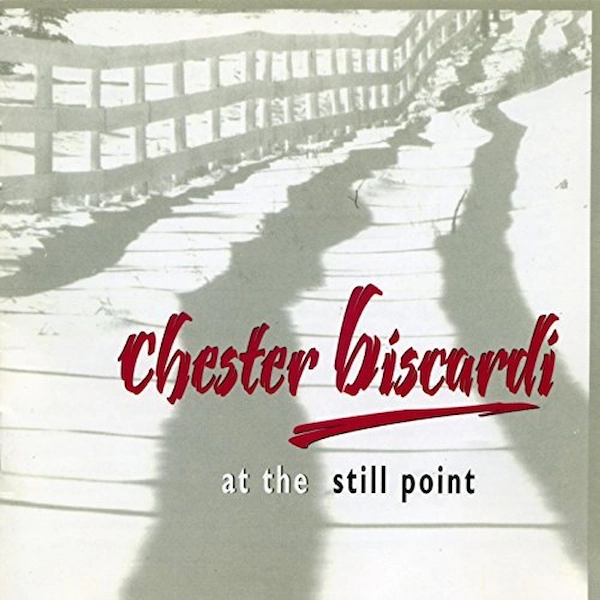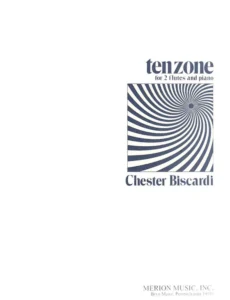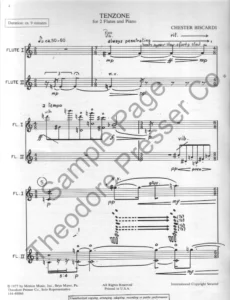Program Notes
A tenzone was a lyric interchange in medieval Italy and Provence (tenson), usually between two poets, concerning topical poetic devices and ideas. This piece itself is a response to the work of Toru Takemitsu, composer, teacher and friend, to whom it is gratefully dedicated. It was first performed by Robert Dick and Keith Underwood, flutes, and Chester Biscardi, piano, at Yale University in 1975 and recorded for CRI with the same flutists and Robert Weirich, piano, in 1979.
Specifically, Tenzone is similar in its lyrical and expressive quality to Takemitsu’s Masque, for two flutes (1959), which is in two parts, Continu and Incidental, both traditionally measured and notated. It differs, however, in its overall construction. It is in one continuous movement, intermixing sections traditionally measured and notated with those “as fast as possible” and unmeasured. It differs also in its subtle use of extended, more recently developed flute techniques that, along with the repetition of tones or cells that establish rich, sonorous centers, create the timbral, harmonic and dramatic motion of the work. A piano was added in order to extend the acoustical range and direct the natural development and flow of the music.
Juxtaposed Landscapes
Juxtaposed Landscapes: An American Composer Journeys into Japan
Convocation Address, Sarah Lawrence College: September 18, 1990








